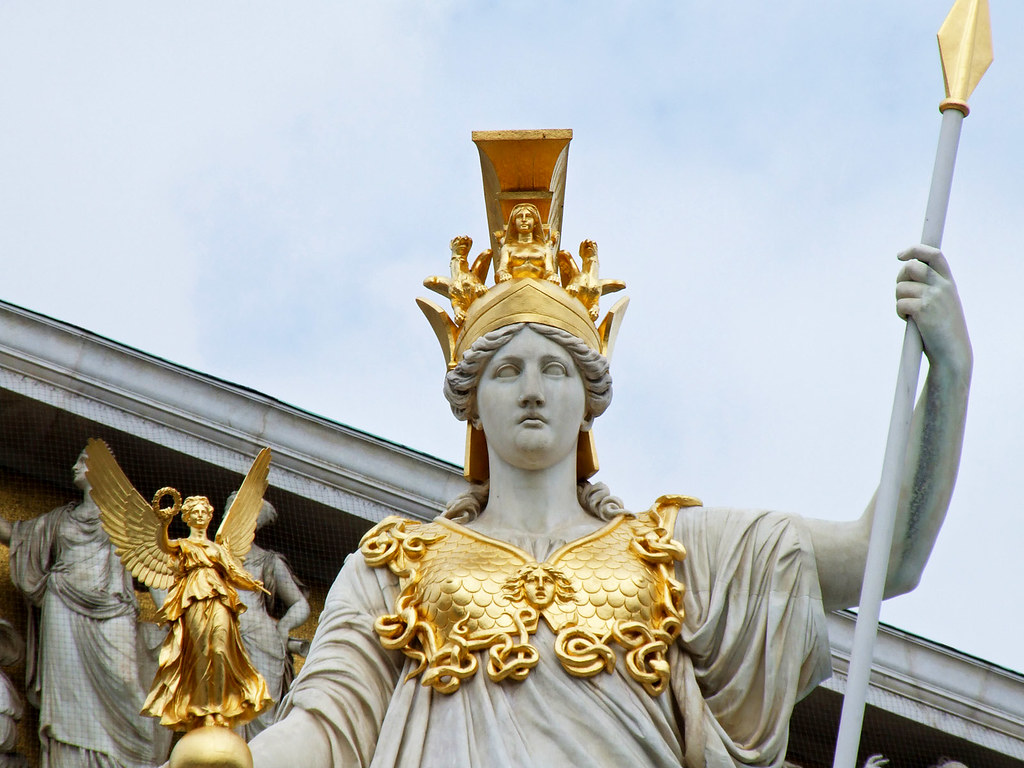On a day pretty close to Valentine's day us Hellenists honour a beautiful festival of love and social stability: the Theogamia, also known as the Gamelia. This festival celebrates the anniversary of the marriage (gamos, γάμος) of Zeus Teleios (Τελειος, Of the Marriage Rites) and Hera Teleia (Τέλεια, same). Zeus Teleios and Hera Teleia were considered the patron Theoi of marriage, although we are unsure if They were given sacrifice to when a man and women wed in ancient Hellas. To celebrate this divine marriage and ask for blessings upon the romantic ties we may have in life, Elaion is organising another PAT ritual on Saturday 6 February. The time is set for 10 AM EST. Will you join us?
We know very little about the actual Theogamia festival. In ancient sources it's sometimes called 'hieros gamos', the sacred marriage, and was referred to as a domestic festival. A day to spend at home, with your wedded partner. Hera Teleia was the primary deity of the festival, with Zeus Teleios being of secondary importance. It was celebrated for sure in Athens, and most likely also in city-states around Athens. It included a shared dinner, and presumably lovemaking, between husband and wife. Unmarried men were most likely free of religious obligations, and were free to dine out.
There seems to be a suggestion that the gamos of Zeus and Hera was enacted as part of the rituals of a hieros gamos festival, but there is no concrete evidence for this. The closest we get to a Hellenic 'Great Rite' is a ritual performed near Knossos in Krete, but the details are so very vague that we can't be sure about anything.
On the Erkhian calendar, Kourotrophos, Hera, Zeus, and Poseidon are all sacrificed to at the same location which appears to be a temple of Hera on this day. Also, as Kourotrophos Herself was often honored first with other deities and especially on this occasion, it seems to make sense that it was one ritual with four sacrifices as listed in the calendar. The ritual we have created combines them both.
It doesn't take much imagination to fill in how to best celebrate this festival. If you are married or have a partner, have a nice dinner together, have some romance, spent the night together and bond. Think about ways in which you will help, honor and love your partner in the year to come. And, of course, join our ritual! I want to leave you with a quote from the Ilias that has nothing to do with the Theogamia itself but does describe the eternal love between Zeus and Hera so very beautifully.
We know very little about the actual Theogamia festival. In ancient sources it's sometimes called 'hieros gamos', the sacred marriage, and was referred to as a domestic festival. A day to spend at home, with your wedded partner. Hera Teleia was the primary deity of the festival, with Zeus Teleios being of secondary importance. It was celebrated for sure in Athens, and most likely also in city-states around Athens. It included a shared dinner, and presumably lovemaking, between husband and wife. Unmarried men were most likely free of religious obligations, and were free to dine out.
There seems to be a suggestion that the gamos of Zeus and Hera was enacted as part of the rituals of a hieros gamos festival, but there is no concrete evidence for this. The closest we get to a Hellenic 'Great Rite' is a ritual performed near Knossos in Krete, but the details are so very vague that we can't be sure about anything.
On the Erkhian calendar, Kourotrophos, Hera, Zeus, and Poseidon are all sacrificed to at the same location which appears to be a temple of Hera on this day. Also, as Kourotrophos Herself was often honored first with other deities and especially on this occasion, it seems to make sense that it was one ritual with four sacrifices as listed in the calendar. The ritual we have created combines them both.
It doesn't take much imagination to fill in how to best celebrate this festival. If you are married or have a partner, have a nice dinner together, have some romance, spent the night together and bond. Think about ways in which you will help, honor and love your partner in the year to come. And, of course, join our ritual! I want to leave you with a quote from the Ilias that has nothing to do with the Theogamia itself but does describe the eternal love between Zeus and Hera so very beautifully.
“Zeus, the Cloud-Driver, saw her, and instantly his sharp mind was overwhelmed by longing, as in the days when they first found love, sleeping together without their dear parents’ knowledge. [...] ‘Hera, [...] let us taste the joys of love; for never has such desire for goddess or mortal woman so gripped and overwhelmed my heart, not even when I was seized by love for Ixion’s wife, who gave birth to Peirithous the gods’ rival in wisdom; or for Acrisius’ daughter, slim-ankled Danaë, who bore Perseus, greatest of warriors; or for the far-famed daughter of Phoenix, who gave me Minos and godlike Rhadamanthus; or for Semele mother of Dionysus, who brings men joy; or for Alcmene at Thebes, whose son was lion-hearted Heracles; or for Demeter of the lovely tresses; or for glorious Leto; or even for you yourself, as this love and sweet desire for you grips me now.’” (Iliad XIV)
The ritual can be found here and you can join the community here. Enjoy the Theogamia, everyone!










